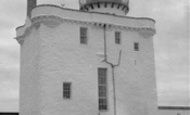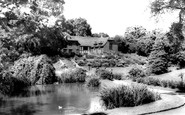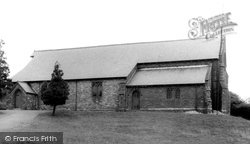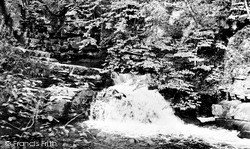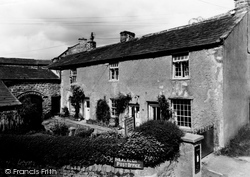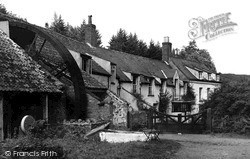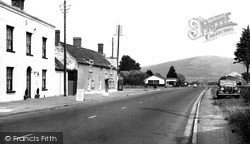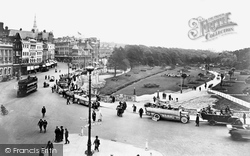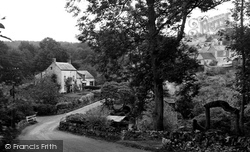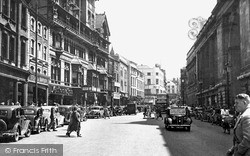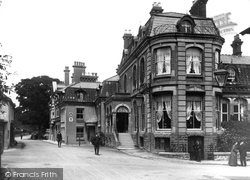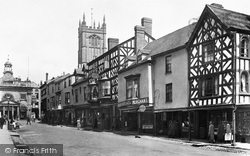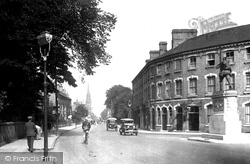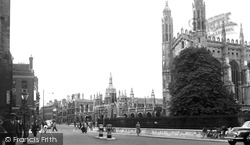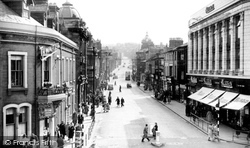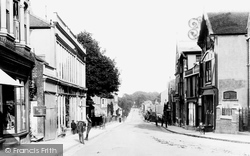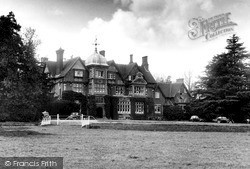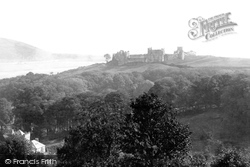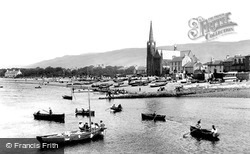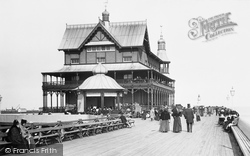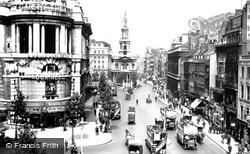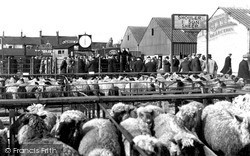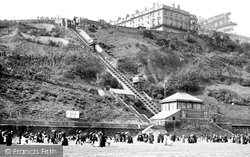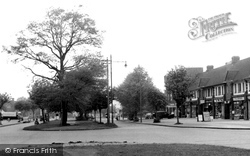Places
18 places found.
Those places high-lighted have photos. All locations may have maps, books and memories.
- Hythe, Kent
- Hythe, Hampshire
- Small Hythe, Kent
- Bablock Hythe, Oxfordshire
- Methwold Hythe, Norfolk
- Hythe, Somerset
- Hythe, Surrey
- Hythe End, Berkshire
- The Hythe, Essex
- Egham Hythe, Surrey
- West Hythe, Kent
- New Hythe, Kent
- Broad Street, Kent (near Hythe)
- Horn Street, Kent (near Hythe)
- Newbarn, Kent (near Hythe)
- Newington, Kent (near Hythe)
- Broad Street, Kent (near Hythe)
- Stone Hill, Kent (near Hythe)
Photos
360 photos found. Showing results 1,741 to 360.
Maps
101 maps found.
Books
10 books found. Showing results 2,089 to 10.
Memories
4,406 memories found. Showing results 871 to 880.
An Idyllic Childhood
I enjoyed reading your piece Jane, I remember you so well. I lived at Newbold Revel, Stretton-Under-Fosse from 1953 - 1977, together with my siblings - Christopher, Angela and Nicholas O'Sullivan. We lived in a ...Read more
A memory of Stretton under Fosse by
Granada! I Am Under Your Spell
I was born in Battersea in 1938. We lived at 28 Forthbridge Rd near Clapham Common. With my mum and sister, I went to the Granada cinema loads of times on a Saturday night. Often you had to line up to get in and they ...Read more
A memory of Battersea by
Mr George Baker, Wooburn Green
My Great Grandfather George Henry Baker (1880 -m1947) was the owner (following his father also George Henry) of the Blacksmith and Scrap Metal Dealer later known as Slades Scrap Yard In Wooburn Green. My Great ...Read more
A memory of Wooburn Green by
West Ealing
I lived in Perivale from 1946 to 1977 by the maternity hospital. Went to Drayton Secondary School in West Ealing from 1957 to 1962. John Walters was the head at that time. Travelled to school by train from South Greenford Halt to West ...Read more
A memory of Ealing by
Childhood Days In The Broch
I left Fraserburgh as an eight year old. but I remember playing round the lighthouse. On the rocks below there was a large pool where we built rafts from herring boxes nailed together and filled with cork floats from ...Read more
A memory of Fraserburgh by
Knock Street 1960 62
I was born in Aberdeen in 1958. I lived in Stuartfield, with my Dad, Bert Gordon and Mum, Vi, in a tied house belonging to Sandy Adams (Adams of Old Deer) from 1960 until we moved to a council house in Windhill Street in ...Read more
A memory of Stuartfield by
Barking... So Very Different Now
We moved to Hertford Road in 1971, I was 3 years old. I remember playing in our overgrown garden which backed on to the Burges road playing fields soon after we moved in. There used to be a horrendous smell from the ...Read more
A memory of Barking by
My Childhood Day's Growing Up In Pontefract
Pontefract a place I call home, my early years were spent Carleton Home's, it would be 58 years before I saw my real Mum Minne Martin from Castleford. from off the West wood Est. in Cutsyke. I was ...Read more
A memory of Pontefract by
Southchurch Hall Farm And Park, A Branch Library In A Garden
The Hall was the closest Library to my family-home in Marlborough Rd. I used to spend hours there every week, researching school homework; and collecting Library Books for myself, - ...Read more
A memory of Southend-on-Sea by
South Benfleet Memories Of Summer Holidays
The photo of Station Hill reminds me of many happy days spent at my aunts house further down the hill ,she lodged in a lovely house with a balcony across the front owned by a couple Em and Bert who ...Read more
A memory of South Benfleet by
Captions
4,899 captions found. Showing results 2,089 to 2,112.
The parish church of Brynmawr is the church of St Mary the Virgin, and it was opened by the licence of the Bishop of St David`s in January 1850.
So called because of the darkness of its waters, the Blue Pool is formed by the Taff Fechan.
The low wall and gatepost on the left belong to the Foresters' Hall, which was used by the Ministry of Health and Social Security after the Second World War.
By the mid 1950s, tourism was starting to occupy a more important position in the Dales economy, alongside the traditional industries of farming and lead mining.
The surrounding cottages were built for the tannery workers by the 19th-century owner, James Hayman.
Under the Mendips, the Old Post House (by the phone box) and Weare House (to its left), now private houses, and the Lamb Inn (behind the photographer) offered refreshment and accommodation to travellers
By the 1920s Bournemouth had become a major south coast resort, rivalling Brighton and Torquay.
In days gone by, the lake at Cranham was the local swimming pool for children in such neighbouring villages as Sheepscombe, Birdlip and Brimpsfield.
The Long Row frontage is dominated by the Black Boy Hotel with its fantastically decorated façade.
By the mid 1800s Church Stretton had become a holiday resort for people keen on country walking, and many hotels were established to serve this market.
It is a wonderful mix of architectural styles, with 15th-century buildings at the top and elegant Georgian further downhill, all overlooked by the tower of St Lawrence's church, the largest parish church
Dedicated by the Duke of York (or rather a plaster cast of it, as the bronze itself did not arrive until ten days later) in July 1922, it depicts a young soldier wearing a laurel victory wreath.
Although the architecture of the screen complements that of the chapel, the screen is in fact 300 years younger, built by the Gothic Revivalist William Wilkins.
Note the style of prams used by the ladies chatting on the right.
Notice the little group of people chatting by the window to the left of the entrance. A shopper has placed a heavy burden on the windowsill. The building with the large dome is the Savoy.
The facade on the left with the fully glazed first floor is Ongley's, a drapery store, which was replaced by the present Marks & Spencer's building in 1938.
architecturally busy Tudorbethan house, built after 1871, is now (in 2000) a hotel and conference centre set in tranquil parkland; that parkland came into being through the 1440s destruction of a large village by the
It was built by the Normans in the 12th century to control the mouth of the River Towy.
There is now a golf course here; and the shelter afforded by the Great Cumbrae makes Largs a first-rate place for boating. Largs commands a magnificent view of Arran.
A new pavilion was opened by the Duke of Edinburgh in 1956. However, this was pulled down in the 1980s as part of an ultimately unsuccessful marina project.
Theatre goers were enjoying performances by Jose Collins in 'Our Nell'.The glittering building was designed by the very fashionable architect Norman Shaw and opened to theatre goers in 1903.
Sheep farming in this area started from a time in the 15th century when the people of villages such as Ingarsby were ejected, and the more profitable sheep were moved in by the monks of Leicester Abbey
The tramway offered holiday-makers an alternative means of escape from the beach to the Esplanade, other than by the 224 steps cutting through the Spa Gardens, and all for just 1d.
By 1626 it had been acquired by the Fox family, and was known as Foxholleys. It subsequently belonged to Zaccheus Walker, who rebuilt the house in grand style, calling it The Hollies.
Places (18)
Photos (360)
Memories (4406)
Books (10)
Maps (101)

